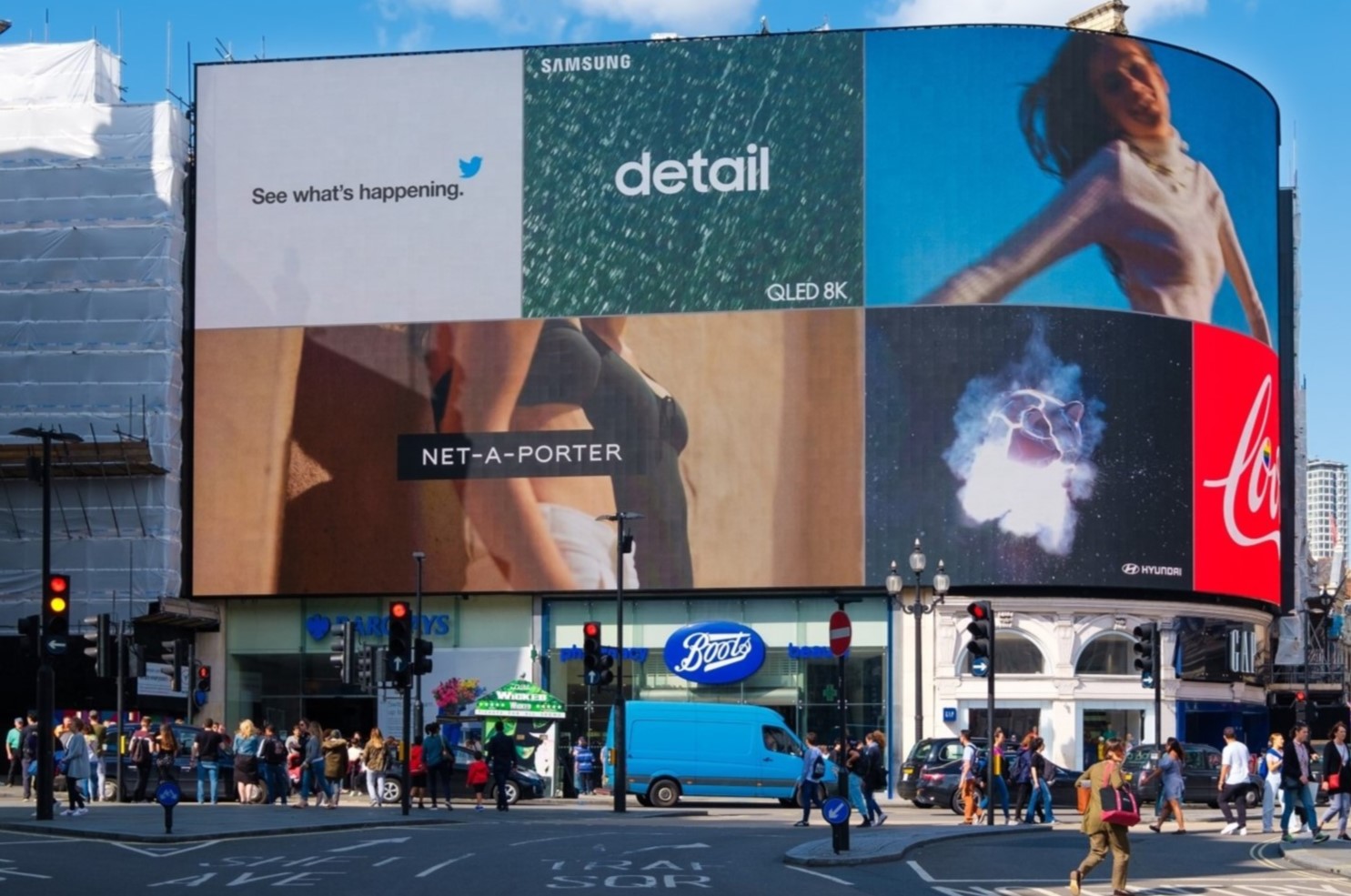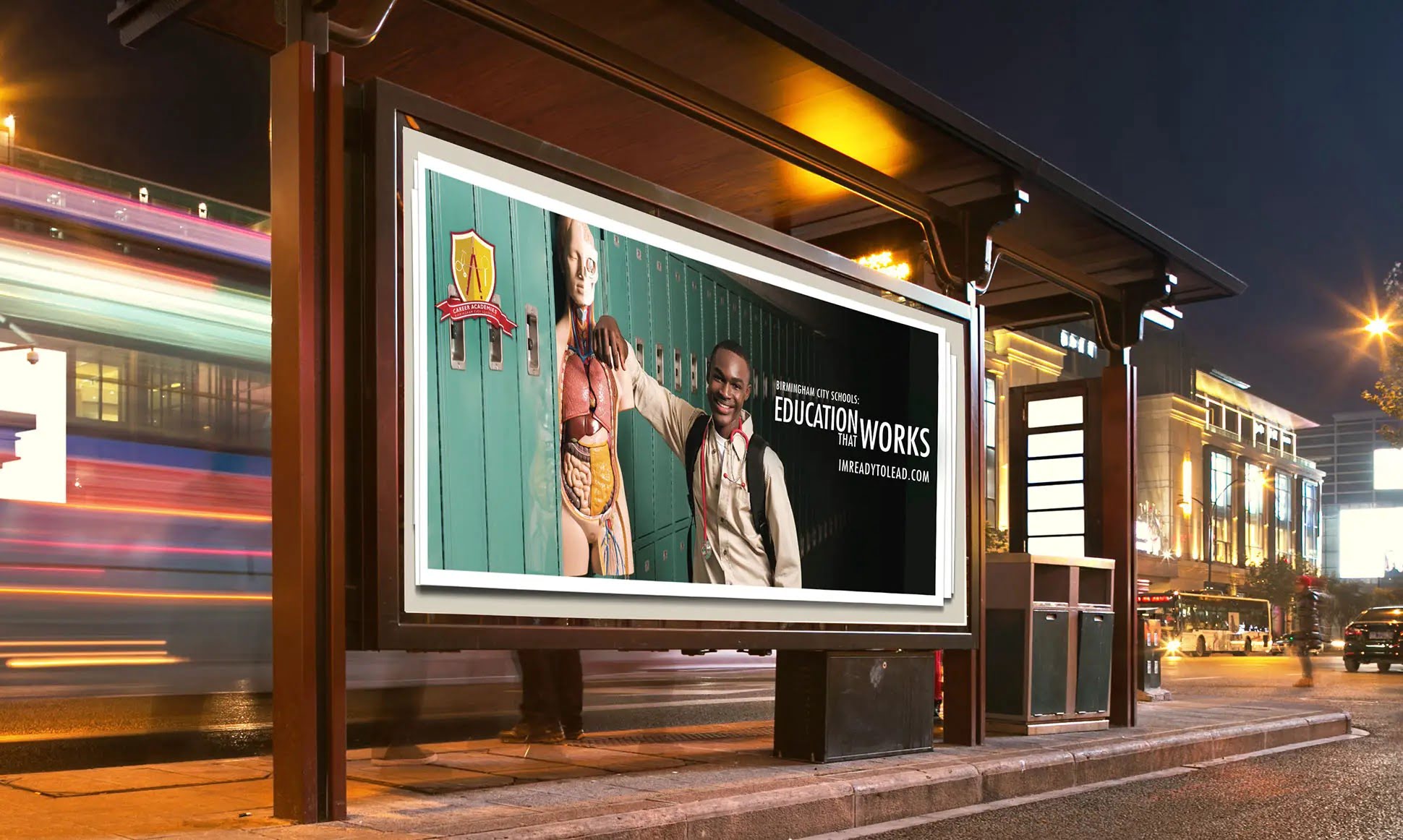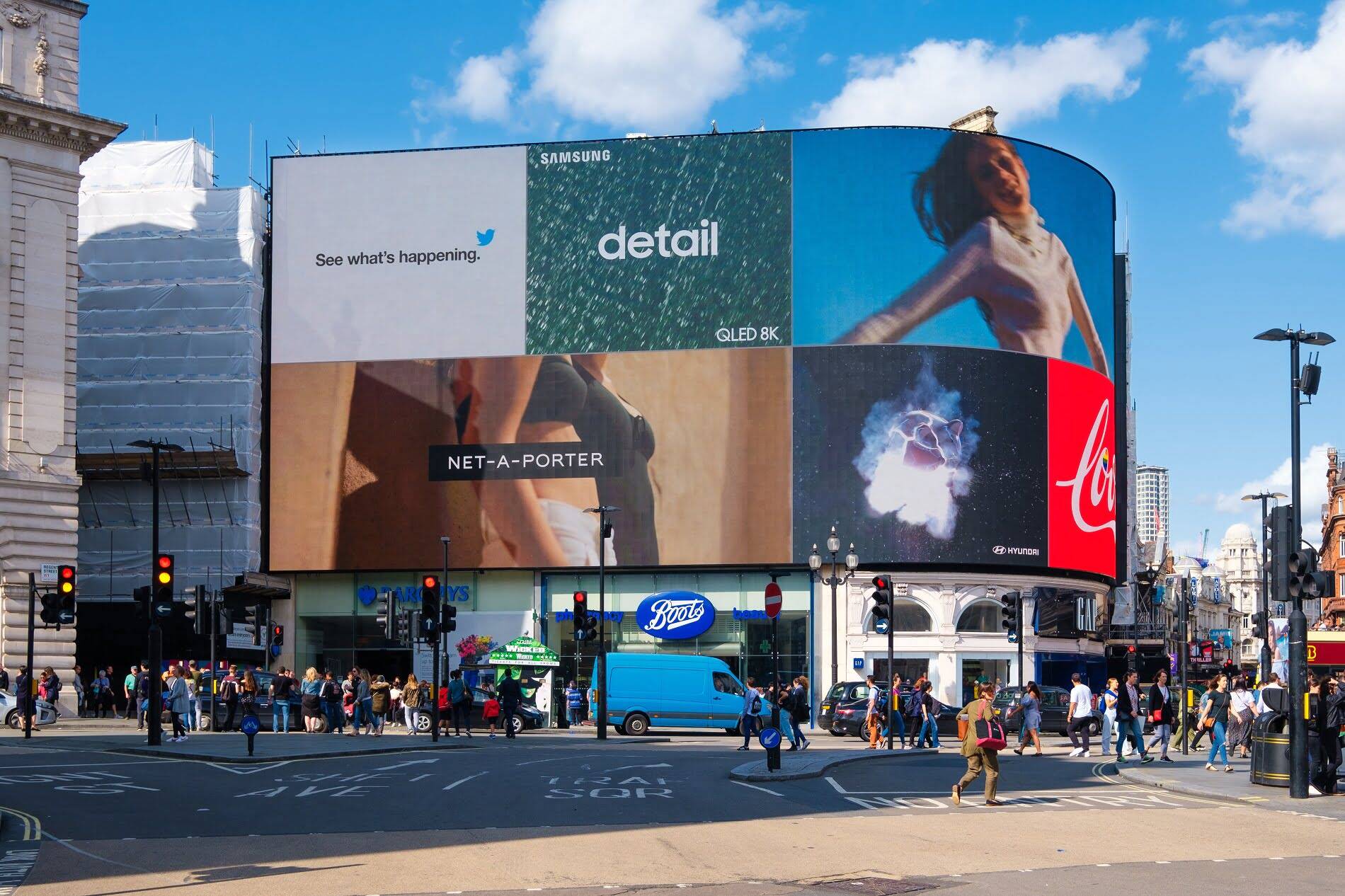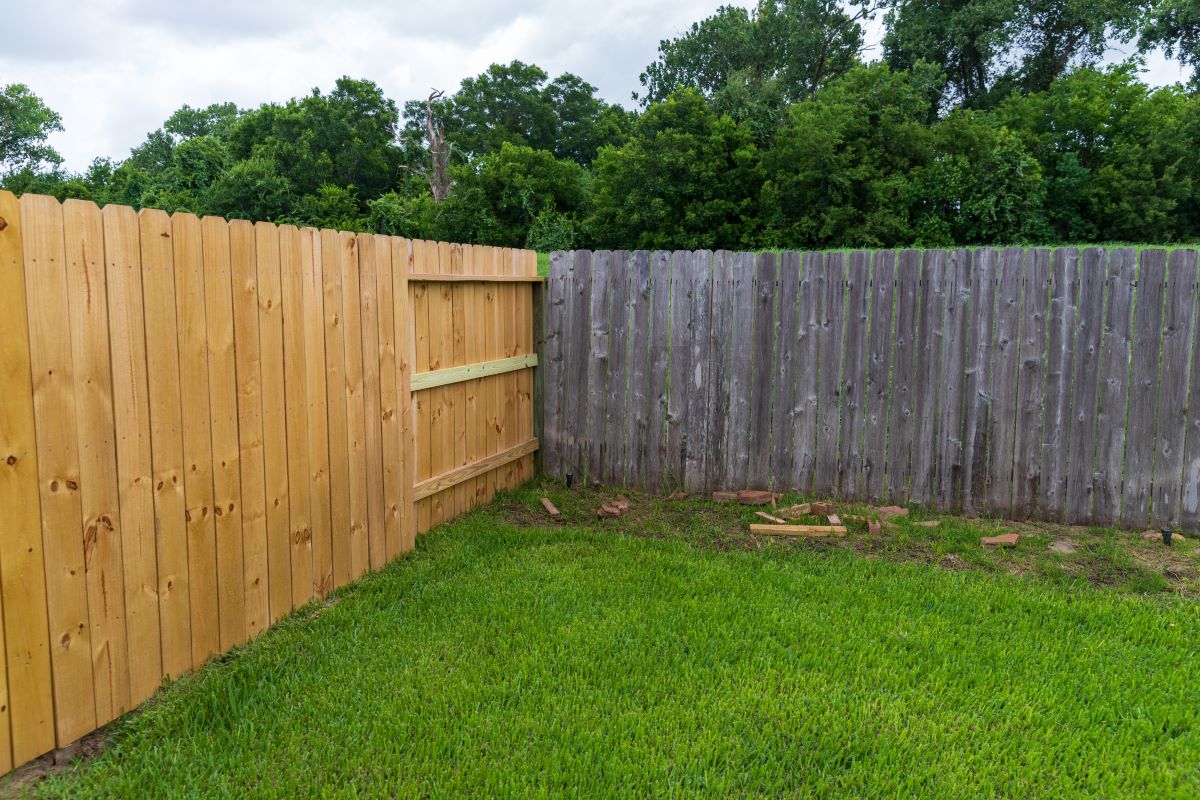Home>Furniture & Design>Outdoor Furniture>Who Was Responsible For Spurring The Growth Of Outdoor Advertising


Outdoor Furniture
Who Was Responsible For Spurring The Growth Of Outdoor Advertising
Modified: January 16, 2024
Discover the key players responsible for the growth of outdoor advertising and its impact on the outdoor furniture, furniture, and design industry. Uncover the driving forces behind this dynamic evolution.
(Many of the links in this article redirect to a specific reviewed product. Your purchase of these products through affiliate links helps to generate commission for Storables.com, at no extra cost. Learn more)
Introduction
Outdoor advertising has been an integral part of the marketing landscape for centuries, captivating audiences and leaving a lasting impression. From the early days of hand-painted signs to the cutting-edge digital displays of today, outdoor advertising has evolved into a powerful medium for reaching consumers in both urban and rural environments. This article delves into the fascinating history and evolution of outdoor advertising, shedding light on the key factors that have shaped its growth and influence.
Throughout history, outdoor advertising has played a pivotal role in connecting brands with their target audiences, leveraging public spaces to convey compelling messages and imagery. As technology continues to advance and consumer behavior evolves, the world of outdoor advertising is experiencing a renaissance, with innovative strategies and creative approaches redefining the way brands engage with the public.
Join us on a journey through time as we explore the early beginnings of outdoor advertising, the pivotal developments that drove its growth in the 20th century, the transformative impact of technology, the influence of regulations and legislation, and the pivotal role of brands and advertisers in shaping the outdoor advertising landscape. By delving into these key aspects, we can gain a deeper understanding of the multifaceted nature of outdoor advertising and its enduring impact on the world of marketing and design.
Key Takeaways:
- Outdoor advertising has a rich history, evolving from ancient symbols to modern digital displays, shaping the visual and cultural landscape of public spaces.
- Brands and advertisers have played a pivotal role in driving the innovation and impact of outdoor advertising, creating iconic campaigns and embracing technological advancements.
Read more: Who Is Responsible For Plumbing In A Condo
Early Beginnings of Outdoor Advertising
The origins of outdoor advertising can be traced back to ancient civilizations, where merchants used eye-catching symbols and signage to promote their goods and services. In ancient Egypt, for example, papyrus was used to create sales messages and posters, which were displayed in public areas to attract the attention of passersby. Similarly, the ancient Greeks and Romans employed outdoor inscriptions and announcements to inform the public about events, laws, and commercial offerings.
Fast forward to the Middle Ages, and we find that outdoor advertising continued to evolve, with shop owners in medieval Europe using distinctive signs to distinguish their establishments and attract customers. These signs, often crafted from wood or metal, served as visual markers in bustling marketplaces and along busy thoroughfares, laying the groundwork for the outdoor advertising practices that would emerge in the centuries to come.
The dawn of the 19th century witnessed a significant shift in outdoor advertising, as the Industrial Revolution brought about advancements in printing and manufacturing. This period saw the proliferation of hand-painted posters and billboards, which became ubiquitous in urban centers and along transportation routes. These eye-catching displays became a common sight, transforming the urban landscape and providing businesses with a powerful means of reaching a broad audience.
One of the most iconic forms of early outdoor advertising was the painted wall sign, which adorned the sides of buildings and became synonymous with urban life. These large-scale advertisements, often featuring bold typography and vibrant imagery, captured the attention of pedestrians and commuters, effectively conveying promotional messages for a wide range of products and services.
As the 19th century progressed, the railway boom further fueled the growth of outdoor advertising, as companies sought to capitalize on the burgeoning transportation networks to promote their offerings to travelers and city dwellers. This era saw the emergence of colorful posters adorning train stations and railway cars, showcasing everything from household goods to entertainment spectacles.
Overall, the early beginnings of outdoor advertising laid the groundwork for the dynamic and ever-evolving industry that we see today. From the ancient symbols of commerce to the emergence of large-scale billboards and railway posters, outdoor advertising has continually adapted to the changing needs of businesses and the public, leaving an indelible mark on the visual landscape of cities and towns around the world.
The Rise of Outdoor Advertising in the 20th Century
The 20th century heralded a new era of innovation and expansion in the realm of outdoor advertising, as technological advancements and shifting consumer behaviors reshaped the industry. The proliferation of automobiles and the rise of consumer culture fueled the demand for eye-catching roadside advertisements, leading to the widespread adoption of billboards and other outdoor marketing mediums.
One of the defining features of outdoor advertising in the 20th century was the advent of the modern billboard. These towering structures, often positioned along highways and in densely populated urban areas, became emblematic of the American landscape, showcasing everything from household products to blockbuster films. The sheer scale and visibility of billboards made them a potent tool for advertisers, enabling them to capture the attention of motorists and pedestrians alike.
Furthermore, the 20th century witnessed the evolution of outdoor advertising design, as artists and graphic designers embraced new techniques and styles to create visually compelling campaigns. The Art Deco movement, with its bold colors and geometric forms, influenced the aesthetic of outdoor advertisements, imbuing them with a sense of modernity and sophistication. This period also saw the rise of iconic mascots and characters, such as the Marlboro Man and the Coca-Cola Santa, who became synonymous with their respective brands and left an indelible mark on popular culture.
As urban centers expanded and transportation networks grew more extensive, outdoor advertising became increasingly intertwined with the fabric of everyday life. From bustling city streets to suburban neighborhoods, billboards, transit ads, and other outdoor displays became ubiquitous, shaping the visual environment and providing a platform for brands to engage with diverse audiences.
The mid-20th century also witnessed the advent of neon signage, which added a vibrant and luminous dimension to outdoor advertising. Neon signs, with their glowing tubes and captivating colors, adorned storefronts, theaters, and cityscapes, infusing the nighttime landscape with a sense of energy and excitement. These luminous displays became an integral part of the urban experience, contributing to the visual identity of commercial districts and entertainment hubs.
Overall, the 20th century marked a period of tremendous growth and innovation for outdoor advertising, laying the groundwork for the dynamic and diverse industry that exists today. From the iconic billboards that lined highways to the luminous glow of neon signs, outdoor advertising became an integral part of the modern consumer experience, shaping the visual and cultural landscape of the 20th century and beyond.
The Role of Technology in Outdoor Advertising
Technology has played a transformative role in the evolution of outdoor advertising, reshaping the way brands connect with consumers in public spaces and revolutionizing the visual landscape of cities and towns. From the advent of digital displays to the integration of data-driven targeting, technological advancements have propelled outdoor advertising into a new era of innovation and effectiveness.
One of the most significant developments in outdoor advertising technology has been the rise of digital signage and LED displays. These versatile and dynamic platforms have redefined the possibilities of outdoor advertising, enabling brands to deliver engaging, high-resolution content in real time. Digital billboards, in particular, have become a ubiquitous presence in urban centers, offering advertisers the flexibility to schedule and update content with unprecedented speed and precision.
Furthermore, the integration of data and analytics has empowered advertisers to deliver targeted and contextually relevant messages to specific audiences. By leveraging location-based data and consumer insights, outdoor advertising campaigns can be tailored to resonate with the unique demographics and behaviors of individuals in a given area. This data-driven approach has enhanced the effectiveness of outdoor advertising, allowing brands to deliver personalized and impactful experiences to consumers on the move.
The convergence of outdoor advertising with mobile technology has also been a game-changer, as QR codes, NFC tags, and augmented reality experiences have bridged the gap between physical and digital engagement. By incorporating interactive elements into outdoor campaigns, brands have been able to create immersive and memorable experiences for passersby, blurring the lines between the physical environment and the digital realm.
Moreover, advancements in sustainability and energy efficiency have had a profound impact on the environmental footprint of outdoor advertising. The adoption of solar-powered and low-energy LED displays has reduced the ecological impact of outdoor advertising installations, aligning the industry with broader efforts to promote sustainability and conservation.
Looking ahead, the continued evolution of technology promises to further revolutionize outdoor advertising, with innovations such as augmented reality, geotargeting, and interactive displays poised to redefine the possibilities of engaging with audiences in public spaces. As technology continues to advance, outdoor advertising will undoubtedly remain at the forefront of creative and impactful brand communication, leveraging the latest tools and techniques to captivate and inspire consumers in the world outside their screens.
The growth of outdoor advertising was spurred by the invention of the printing press in the 15th century, which allowed for the mass production of posters and billboards. This made it easier for businesses to reach a larger audience with their advertisements.
The Influence of Regulations and Legislation
Regulations and legislation have exerted a profound influence on the landscape of outdoor advertising, shaping the content, placement, and aesthetics of public-facing marketing communications. From zoning ordinances to content restrictions, the legal framework surrounding outdoor advertising has evolved in response to changing societal values, aesthetic considerations, and public safety concerns.
One of the primary areas of regulation in outdoor advertising pertains to the placement and size of billboards and signage. Zoning laws and municipal ordinances dictate where outdoor advertising structures can be erected, often delineating specific zones for commercial signage and imposing restrictions on the proximity of billboards to residential areas, historical sites, and natural landscapes. These regulations aim to balance the visibility of advertising with the preservation of scenic vistas and the character of communities.
Content regulations also play a pivotal role in governing outdoor advertising, with restrictions on the display of certain types of content, such as tobacco and alcohol advertising, as well as regulations related to the use of imagery and language that may be deemed offensive or inappropriate for public display. These guidelines are designed to uphold community standards, protect vulnerable audiences, and maintain the visual integrity of public spaces.
Furthermore, safety considerations have driven the implementation of regulations related to the structural integrity and maintenance of outdoor advertising installations. Requirements for structural engineering assessments, wind load calculations, and regular maintenance inspections aim to ensure the safety of billboards and signage, mitigating the risk of structural failure and safeguarding the public and adjacent properties.
The advent of digital signage has introduced new considerations in the realm of regulation, as municipalities and governing bodies grapple with issues such as brightness levels, screen refresh rates, and the duration of static images. These regulations seek to balance the benefits of dynamic digital displays with concerns related to light pollution, driver distraction, and visual clutter in urban environments.
As the outdoor advertising industry continues to evolve, regulations and legislation will play a crucial role in shaping the future of public-facing marketing communications. Striking a balance between artistic expression, commercial interests, and the preservation of public spaces, the regulatory framework surrounding outdoor advertising reflects the complex interplay of legal, aesthetic, and societal considerations, ultimately influencing the visual character and messaging of the world outside our windows.
Read more: What Is Outdoor Advertising?
The Impact of Brands and Advertisers
Brands and advertisers have wielded a profound influence on the evolution and impact of outdoor advertising, leveraging the medium to convey compelling messages, shape consumer perceptions, and create lasting connections with diverse audiences. From iconic campaigns that have become ingrained in popular culture to innovative approaches that push the boundaries of creativity, the role of brands and advertisers in outdoor advertising has been instrumental in shaping the visual and cultural landscape of public spaces.
One of the key contributions of brands and advertisers to outdoor advertising has been the cultivation of memorable and iconic campaigns that resonate with audiences on a visceral level. Whether through captivating imagery, clever slogans, or evocative storytelling, brands have harnessed the power of outdoor advertising to create indelible moments that leave a lasting impression on consumers. From the timeless elegance of the Coca-Cola Santa to the bold simplicity of the Marlboro Man, these enduring symbols have transcended their commercial origins to become part of the collective consciousness.
Moreover, brands and advertisers have been at the forefront of embracing technological innovation in outdoor advertising, harnessing digital displays, interactive experiences, and data-driven targeting to deliver personalized and impactful messaging. By leveraging the latest tools and techniques, brands have been able to engage audiences in dynamic and immersive ways, blurring the lines between the physical and digital realms and creating memorable experiences that extend beyond the moment of encounter.
The influence of brands and advertisers on the visual landscape of outdoor advertising extends beyond individual campaigns, encompassing broader trends in design, aesthetics, and visual storytelling. By pushing the boundaries of creativity and embracing diverse artistic styles, brands have contributed to the vibrancy and diversity of outdoor advertising, infusing public spaces with a rich tapestry of visual narratives and expressions.
Furthermore, the strategic and creative decisions made by brands and advertisers have a ripple effect on the overall visual environment, shaping the character and ambiance of urban and rural landscapes. Whether through the selection of color palettes, the integration of typography, or the use of innovative materials, outdoor advertising campaigns have the power to transform the mundane into the extraordinary, infusing public spaces with a sense of energy, creativity, and visual delight.
As we look to the future, the impact of brands and advertisers on outdoor advertising is poised to continue evolving, with a focus on authenticity, relevance, and meaningful engagement with audiences. By harnessing the power of storytelling, technology, and design, brands and advertisers will continue to shape the visual and cultural fabric of public spaces, creating experiences that captivate, inspire, and resonate with the world outside our windows.
Conclusion
Outdoor advertising has traversed a remarkable journey through the annals of history, evolving from ancient symbols and hand-painted signs to the dynamic digital displays and interactive experiences of the present day. The enduring influence of outdoor advertising on the visual and cultural landscape of public spaces is a testament to its capacity for creativity, impact, and resonance.
As we reflect on the multifaceted history and evolution of outdoor advertising, it becomes evident that the medium has been shaped by a confluence of factors, from technological advancements and regulatory frameworks to the creative ingenuity of brands and advertisers. The early beginnings of outdoor advertising, rooted in ancient civilizations and medieval marketplaces, laid the foundation for the expansive and diverse industry that exists today.
The 20th century witnessed a transformative surge in the prominence and innovation of outdoor advertising, with the rise of billboards, neon signage, and iconic visual campaigns leaving an indelible mark on the urban and rural landscapes. The integration of technology, data-driven targeting, and interactive elements has propelled outdoor advertising into a new era of engagement and relevance, blurring the lines between physical and digital realms.
Regulations and legislation have played a pivotal role in shaping the content, placement, and aesthetics of outdoor advertising, balancing the commercial interests of brands with the preservation of public spaces and community values. The influence of brands and advertisers on outdoor advertising has been profound, driving the creation of iconic campaigns, embracing technological innovation, and shaping the visual character of public spaces with creativity and relevance.
Looking ahead, the future of outdoor advertising holds promise for continued innovation, creativity, and meaningful engagement with audiences. As technology evolves, consumer behaviors shift, and societal values transform, outdoor advertising will continue to adapt and thrive, leveraging the latest tools and strategies to captivate and inspire in the world outside our screens.
In the tapestry of marketing and design, outdoor advertising stands as a vibrant and enduring canvas, inviting brands and audiences to connect, create, and experience the power of storytelling in the spaces we inhabit. From ancient symbols to digital spectacles, the journey of outdoor advertising is a testament to the enduring impact of creativity, innovation, and the human desire to connect and communicate in the world around us.
Frequently Asked Questions about Who Was Responsible For Spurring The Growth Of Outdoor Advertising
Was this page helpful?
At Storables.com, we guarantee accurate and reliable information. Our content, validated by Expert Board Contributors, is crafted following stringent Editorial Policies. We're committed to providing you with well-researched, expert-backed insights for all your informational needs.















0 thoughts on “Who Was Responsible For Spurring The Growth Of Outdoor Advertising”